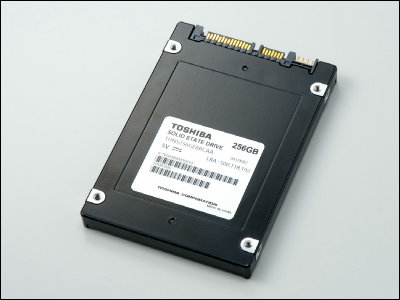Intel is pursuing a move towards introducing the next generation nonvolatile memory technology '3D XPoint DIMM' memory of explosive speed and large capacity into the market

Intel is trying to promote the introduction of drive products using the new memory technology " 3D XPoint " which was announced in 2015. 3D XPoint is a kind of nonvolatile memory, and it is said that it has several times to 10 times higher performance than the conventional SSD etc.
Intel's Plans for 3DXP DIMMs Emerge
https://www.realworldtech.com/intels-3dxp-dimms/
3D XPoint is a nonvolatile memory technology that was announced by Intel and Micron. It is a new type of device different from conventional memory devices, and research has been done since the early 2000s. Materials and structures have not been clarified yet, but arsenic-doped "Ovonic Threshold Switch" (Se-Ge (Ge-Sb-Te)) with bit cells formed from chalcogenide glass - Si) is considered to be used.
Explaining the characteristics of 3D XPoint in one word, it seems that the explanation "It is located between DRAM and NAND flash" is most appropriate. Compared to DRAM, latency is inferior, but the recording density is much better, it is said to be more durable than NAND. According to Intel's explanation, the latency when compared with NAND flash is 1/10, the write-life is tripled, the write speed is improved to 4 times, the read speed is improved to 3 times, the power consumption is 30% It is said that it will be alleviated.
3D XPoint will be provided as a DIMM device, firstly 128GB, 256GB, and 512GB products will be released to the world. It is intended for server storage, and it corresponds to "Cascade Lake" processor of the next-generation Core-X.

Intel has sampled DIMMs that introduced 3D XPoint technology as of June 2018 to each vendor and has begun offering access to cloud-based systems to some developers. The actual product is expected to be released in the fourth quarter of 2018, but considering the production system, sales channels, etc., it is expected that ordinary users will be in around 2019.
It is still a 3D XPoint DIMM with information in the state of dispensing, but there are also situations where it is not yet clearly possible. Intel does not disclose the exact latency of 3D XPoint DIMMs, nor does it disclose power consumption and heat dissipation. This is expected to be due to the fact that the power consumption is probably larger than that of conventional DRAM-based DIMMs, but on the other hand there is also a view that it is also brushing up technology. If the power consumption is high, it is necessary to revise the motherboard design to ensure the power design and cooling performance of the entire system, so urgent information disclosure is required. Also, the durability of the 3D XPoint DIMM is still unknown.
Furthermore, clear information on price is not disclosed yet. However, from the view that the performance is located between DRAM and NAND type flash memory, the prediction that the price will settle to about 75 to 80% of DRAM (DDR 4) is also coming up.
Related Posts:
in Hardware, Posted by darkhorse_log







